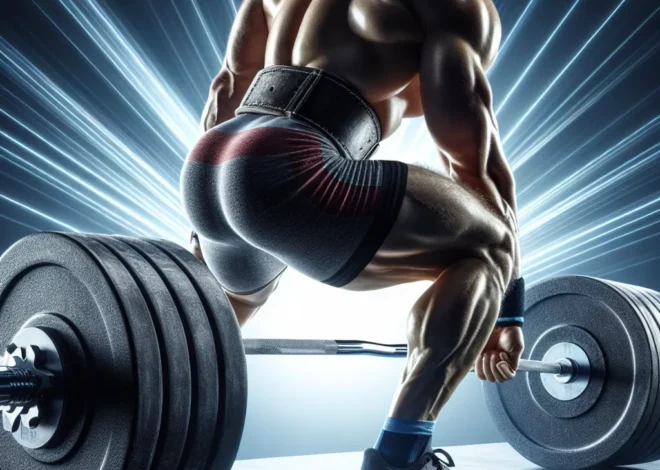Weightlifting belts
Weightlifting belts are a crucial piece of equipment designed to support the lower back and core during heavy lifting exercises. These belts are typically made of leather, nylon, or similar sturdy materials and are worn tightly around the waist. The main purpose of a weightlifting belt is to increase intra-abdominal pressure, providing additional support and stability to the spine during movements like squats, deadlifts, and overhead presses. They can also help reduce the risk of injury and improve lifting performance by allowing the lifter to generate more force and maintain proper form. When choosing a weightlifting belt, it’s essential to consider the width, thickness, and closure system to ensure a proper fit and maximum support for the lifter’s individual needs.
In summary, weightlifting belts are a valuable tool for individuals engaged in heavy weight training, as they provide crucial support for the lower back and core. By increasing intra-abdominal pressure and stabilizing the spine, these belts help reduce the risk of injury and enhance lifting performance. When selecting a weightlifting belt, it’s important to consider key factors such as material, width, thickness, and closure system to ensure a comfortable and effective fit for the specific lifting activities and individual requirements.
Implantologia Mysłowice: Innowacyjne metody leczenia
Artykuł opisuje korzyści z nowoczesnych rozwiązań w dziedzinie implantologii stomatologicznej w Mysłowicach. Wskazuje, że nowoczesne metody leczenia oferują znaczną poprawę komfortu pacjenta, estetyki, trwałości i funkcjonalności implantów. Dodatkowo, nowoczesne technologie diagnostyczne przyczyniają się do szybszych i bardziej precyzyjnych procedur, skracając czas rekonwalescencji. Artykuł zachęca do skorzystania z usług wysokiej klasy specjalistów w Mysłowicach, a także podkreśla korzyści płynące z doświadczenia, innowacyjności oraz kompleksowej opieki w tej dziedzinie. Ponadto, wskazuje, że implantologia Mysłowice to doskonałe rozwiązanie dla osób poszukujących trwałych i estetycznych rozwiązań protetycznych, które znacząco poprawią jakość życia. Całkowicie warto przeczytać całość artykułu, aby dowiedzieć się więcej o najnowszych technologiach w implantologii stomatologicznej oraz korzyściach płynących z implantologii Mysłowice.
– Wszycie alkoholowe – skuteczna metoda walki z nałogiem
W artykule omówiono terapię farmakologiczną w leczeniu uzależnienia od alkoholu, przytaczając innowacyjne metody, takie jak wszycie alkoholowe, które wprowadza lek powodujący dyskomfort po spożyciu alkoholu, co skutecznie zmniejsza pragnienie alkoholu. Przedstawiono także popularne leki stosowane w farmakoterapii uzależnienia od alkoholu, takie jak disulfiram i naltrekson, opisując ich mechanizmy działania. Artykuł podkreśla znaczenie monitorowania i współpracy z terapeutą lub lekarzem specjalizującym się w leczeniu uzależnień. Ponadto, omawia się także rolę wsparcia psychologicznego w procesie rekonwalescencji po odstawieniu alkoholu, wskazując na konieczność kontynuacji terapii po wszyciu alkoholowym. Dodatkowo, zaznaczono znaczenie nowoczesnych technik terapeutycznych, takich jak wszycie alkoholowe, które zdobywają popularność w terapii uzależnienia od alkoholu, co przyczynia się do zapewnienia skutecznej pomocy osobom zmagającym się z problemem nadmiernego spożywania alkoholu. Całość artykułu przekonuje czytelnika o istotności terapii farmakologicznej oraz wsparcia psychologicznego w skutecznym leczeniu uzależnienia od alkoholu, zachęcając do przeczytania pełnej treści dla uzyskania dodatkowych informacji na temat nowoczesnych technik terapeutycznych.
The role of Weightlifting Belts in Enhancing Performance
The article “The Science Behind Weightlifting Belts: How Do They Enhance Performance?” explores the role of weightlifting belts in improving lifting performance. It delves into the scientific mechanism behind weightlifting belts, highlighting how they contribute to increased intra-abdominal pressure, muscle activation, and improved proprioceptive awareness. The article discusses how weightlifting belts stabilize the spine, enhance muscle activation, and improve lifting posture, ultimately reducing the risk of injuries and optimizing performance. Additionally, it addresses the benefits and drawbacks of using weightlifting belts for athletes, emphasizing the importance of judicious use and the need to strike a balance between support and core muscle development. Overall, the article provides valuable insights for athletes aiming to leverage weightlifting belts effectively and safely to enhance their strength training and powerlifting endeavors.
The Impact of Weightlifting Belts on Performance
In the article “Why Weightlifting Belts Are Used in Strength Training,” the use of weightlifting belts in strength training is explored. The belts are designed to increase intra-abdominal pressure, which stabilizes the spine and provides a more rigid core, enhancing lifting performance and reducing the risk of injury during heavy lifting. Additionally, weightlifting belts can improve lifting technique, prevent excessive arching or rounding of the lower back, and encourage better muscle activation. However, it’s important to note that they should be used selectively for heavy lifts, as overuse may weaken core muscles and should not replace overall core strength development. The subsequent section discusses “The Effect of Weightlifting Belts on Powerlifting Performance,” highlighting the mixed research findings on the impact of weightlifting belts on powerlifting performance, with some studies suggesting an increase in peak power output, while others indicate no significant improvements. The article provides a comprehensive overview of the role of weightlifting belts in strength and powerlifting training, offering valuable insights for readers interested in the topic.
The Benefits of Using Weightlifting Belts
Weightlifting belts are essential gear designed to provide support and stability during heavy lifting exercises by increasing intra-abdominal pressure and stabilizing the spine. These belts facilitate the maintenance of proper form and posture, reducing the stress on the lower back and helping lifters engage their core muscles effectively. While weightlifting belts can enhance stability and enable lifters to handle heavier weights, they should not replace the development of intrinsic core strength. The combination of using weightlifting belts and incorporating core-strengthening exercises into a training routine is crucial for achieving optimal performance and injury prevention in weightlifting. Overall, weightlifting belts, when used in conjunction with a well-rounded core strengthening program, can contribute to improved performance and long-term injury prevention, making them a valuable accessory for both fitness enthusiasts and professional athletes.





